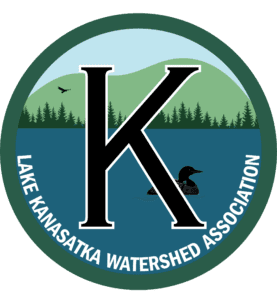WBMP Executive Summary
Lake Kanasatka has experienced generally good water quality conditions in the the years leading up to the cyanobacteria blooms in 2020 when two advisories were posted by the New Hampshire Department of Environmental Services (NHDES). Blooms have continued to proliferate since that time. Water quality testing shows a trend towards less dissolved oxygen and less clarity, meaning more nutrients are entering the lake.
Cyanobacteria blooms are a result of a combination of warming waters and excessive nutrients, in particular, phosphorus. Sourc
Our goal as an Association is to reduce the amount of phosphorus that enters the lake from both public areas like the boat launch, town roads and culverts as well as reducing the amount stemming from individual private properties.
The WBMP recommends a reduction of phosphorus by 130 lb/year in an effort to combat the water quality issues we currently face. As a point of reference, the 5 sites identified as priority locations in the WBMP will only reduce the phosphorus load by 14.88 lb/year.
What does this mean for the individual homeowner? Every property owner needs to start NOW to make the recommended remediations found in their shoreline survey packet. “Private landowners arguably hold the most power in making significant impact to restoring and maintaining excellent water quality in our lakes.” (Lake Kanasatka Watershed-Based Management Plan p. xiii)
First and foremost, you can do the following:
- have your septic system evaluated by a certified inspector and take steps to address any deficiencies
- insure that your shoreline vegetated buffers are robust enough to keep stormwater runoff from reaching the lake
- address stormwater run-off from your driveway and paths by using water bars, water razors or repurposed fire hoses
Additional resources can be found now in our Kanasatka Water Matters newsletters and on kanasatka.org in the coming weeks. Both https://nhlakes.org/ and
DO YOUR PART … BE LAKE SMART!
our lake depends on it
